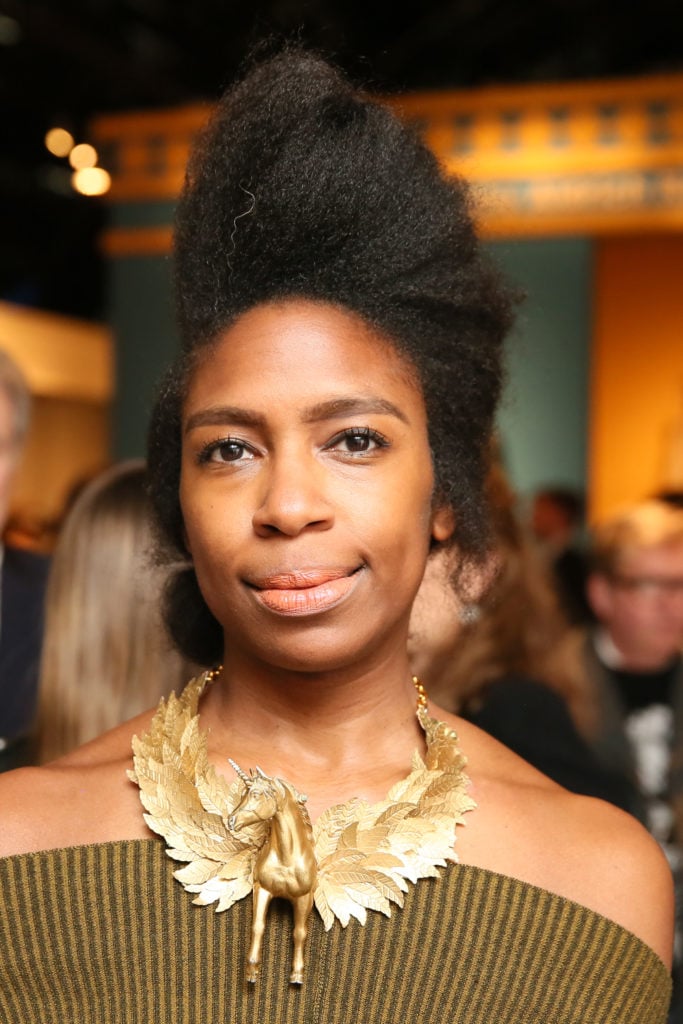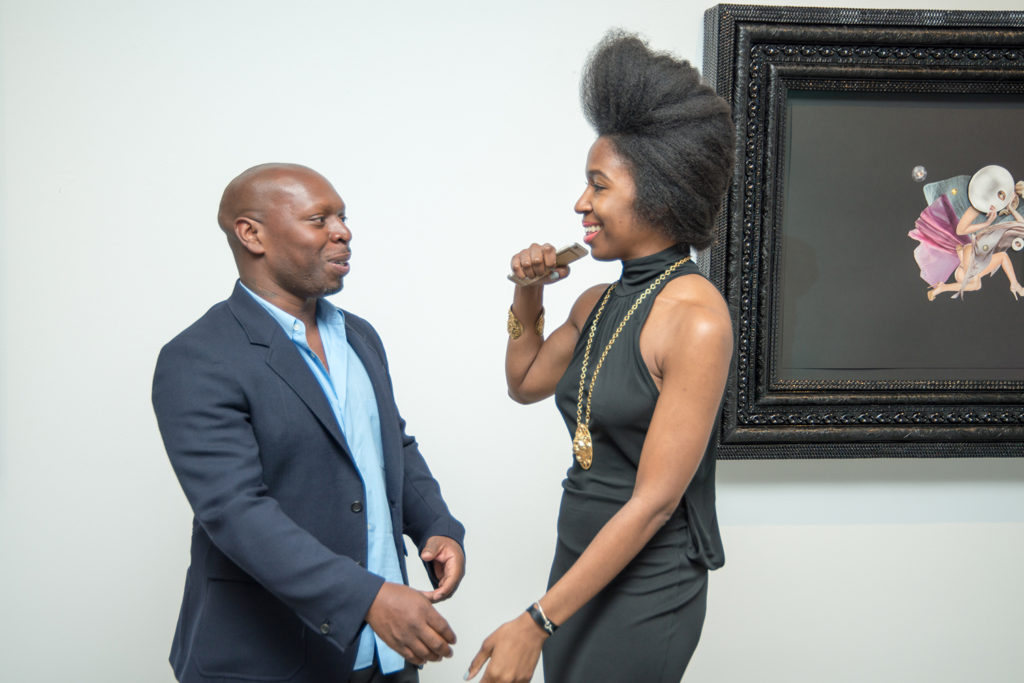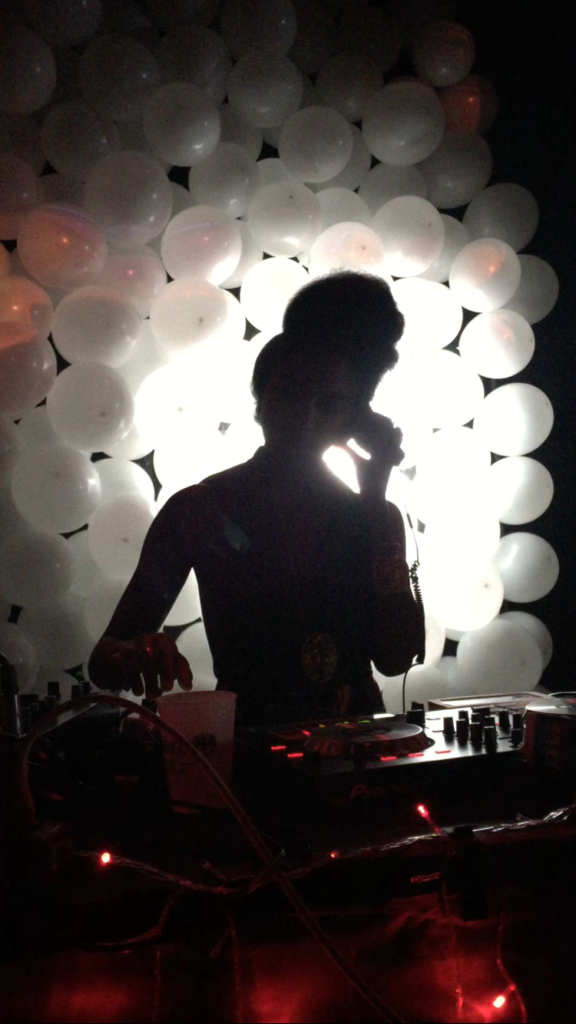People
How I Got My Art Job: Meet the Art-World PR Maven Who Moonlights as a DJ
April Hunt also throws a kick-ass party.

April Hunt also throws a kick-ass party.

Sarah Cascone

From fabricators to mummy conservators to private collection managers, the art world is full of fascinating jobs you may not have realized even existed. In artnet News’s column “How I Got My Art Job,” we delve into these enviable art-world occupations, asking insiders to share their career path and advice for others who wish to follow in their footsteps.
This week, we spoke with April Hunt, founder and CEO of sparkplugPR, also a popular art-world DJ.
Education: I went to the University of Virginia where I double majored in English literature and African American studies, and minored in anthropology. I took a couple of art history classes in college, but I wasn’t focused on that. I actually wanted to write. I thought I was going to be on the opposite end of the spectrum, but then I ended up being on the PR side.
How I wound up in the art world: My first job when I got out of college was teaching English as a second language in Mexico City. After I came back, I moved to New York and started interning. One of my first internships was in media relations at Epic Records, which was my entry point to the PR world.
My first official job was in the PR department at the New-York Historical Society. While I was there, they had a contemporary art show, with artists including Kara Walker, Glenn Ligon, and Kerry James Marshall, that responded to the legacy of slavery. It was part of their “Slavery in New York” series. That’s what sparked my interest in contemporary art.
How I got the job I have now: I worked at PS1 for four years. That was interesting because I saw the transition as it merged with MoMA. I started sparkplugPR literally as I was leaving.
During “Greater New York” in 2010, I became really good friends with Rashaad Newsome. The next year, he was having a show at Marlborough Contemporary in New York. They were beefing up their younger programming, and needed some help with their PR. They became my first client. I had been feeling like it was time to move on from the museum. The stars were aligned to embark on this opportunity, so I just dove into it.

April Hunt and Rashaad Newsome. Photograph by Charlie Rubin.
The biggest challenges I faced: Doing institutional PR in house is very different. You have other people to brainstorm with; you have support. Anywhere you work, you have to hustle, but it was a different type of grind. Suddenly, I was on my own—I was a bit blindsided.
Even though there were all these relationships I had cultivated over the years, one of my biggest anxieties was worrying, “will people remember me?” What happens when you drop your institution’s name from your own? Doing PR hinges so much on making sure you have strong relationships with writers and media outlets, and I was worried about how working on my own would affect my ability to stay relevant.
Advice for those who want my job: Don’t let your anxieties hold you back. Mentally prepare yourself for the risk of working independently, and be prepared financially for that risk, but don’t underestimate your skill set and your relationships, and the power of that.
My most influential mentor: LaVerne Perry Kennedy was my boss at my first internship at Epic. She ran media relations. Seeing her, as a woman of color with this badass position at this record label, definitely had an impact on me.
What my typical day is like: Lately my business is a bit in transition. I have a partner in crime, Paola Zanzo, who I used to work with back when I was at PS1 and she was at MoMA. She went on to become director of special events at the Guggenheim, but now she’s a free agent, so we joined forces in the fall.
We meet wherever there’s wonderful Wi-Fi, and have a work session together, as if we were going to the office. I always like to stack my meetings, so I’ll have days where it’s mostly meetings, and other days where I can just sit down and think in relative quiet and strategize on projects.
The best part of my job: I run a very small boutiques arts-focused PR firm, which means there’s more freedom to partner and collaborate with people, especially folks that I’ve known for a while.
Our projects can range from working with galleries, to working directly with an artist on a special project, or working with brands that collaborate with artists or have an interest in supporting the arts. In addition to our PR work, we also organize special events and exclusive programming and cultural actives on a intimate scale.

April Hunt in the DJ booth. Photograph by Derrick Adams.
My most memorable project: You’re asking me to pick one of my children! I love working with Rashaad. We’ve worked together for so long at this point, and his projects really resonate with me. He’s always thinking about community and layering in social justice concerns in a way that’s very gracefully done, but with high impact. I’m grateful to have helped spread some awareness on it.
My not-so-secret side hustle: I also DJ art world events and parties. I technically started DJing before I even got into the art world. I was practicing in my bedroom and would have these gigs downtown. I think maybe I played a couple of PS1 events at some point. I had a residency at a place called Sway that was on Spring Street and I would invite a group of artists to come. It all happened organically and people started to book me for different art-related events. These days I maybe do it one to two times a month.
One thing I wish I could tell my 22-year-old self: Be bolder and don’t under estimate yourself. It’s very easy to feel intimidated at that age.